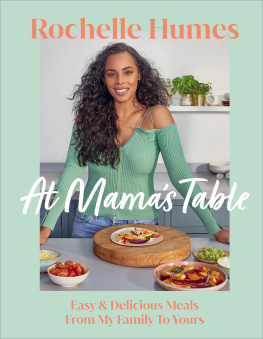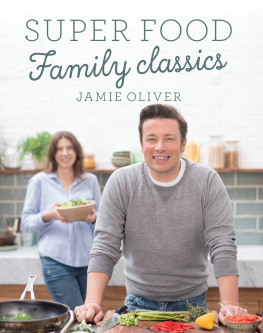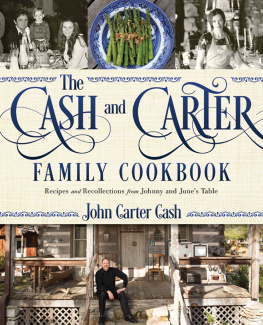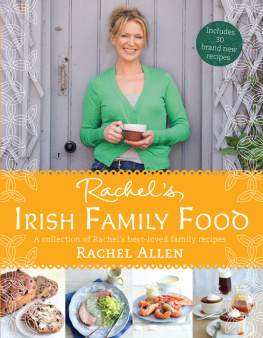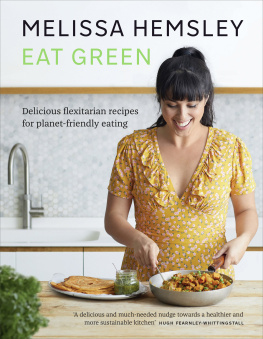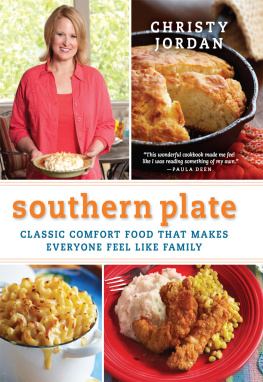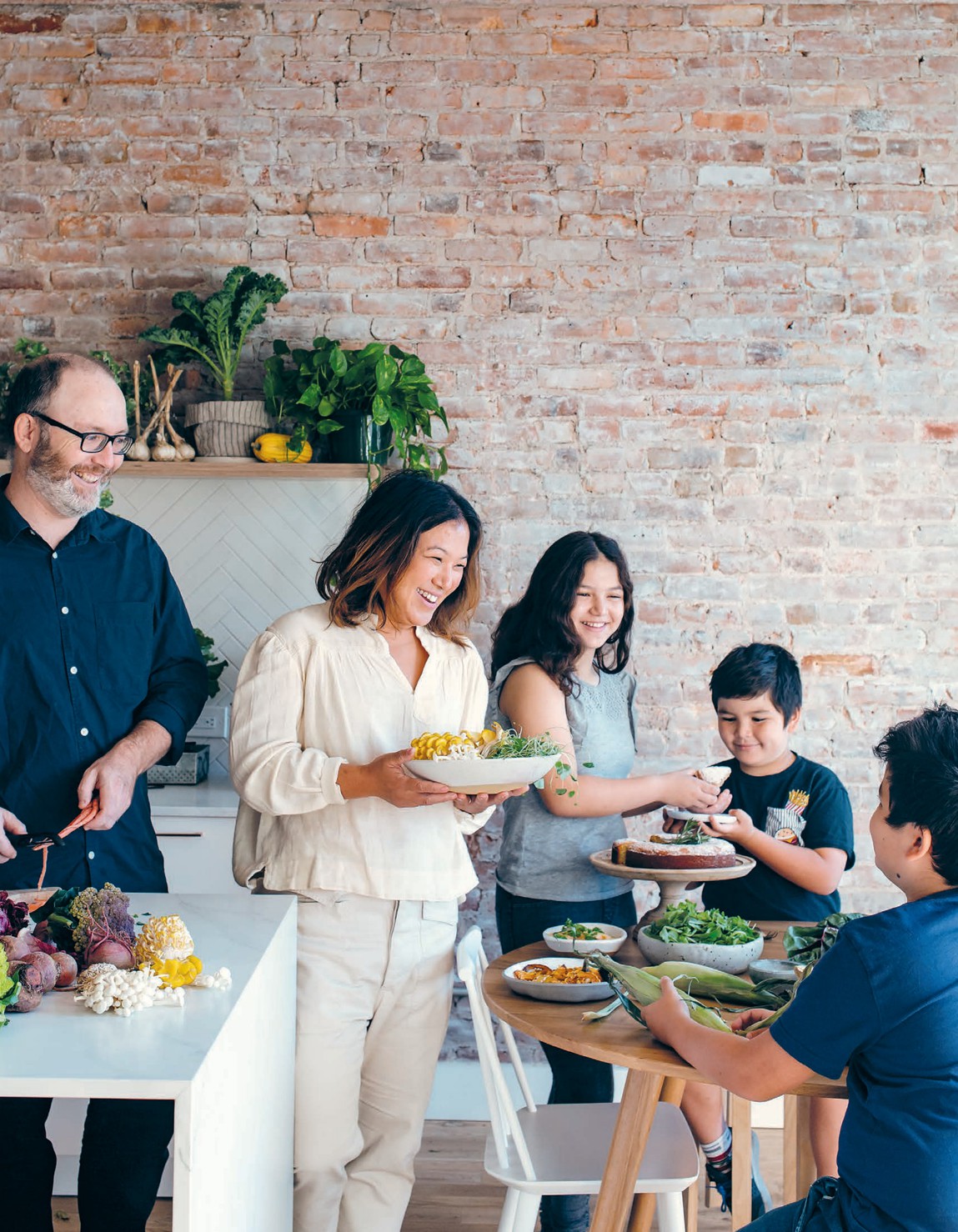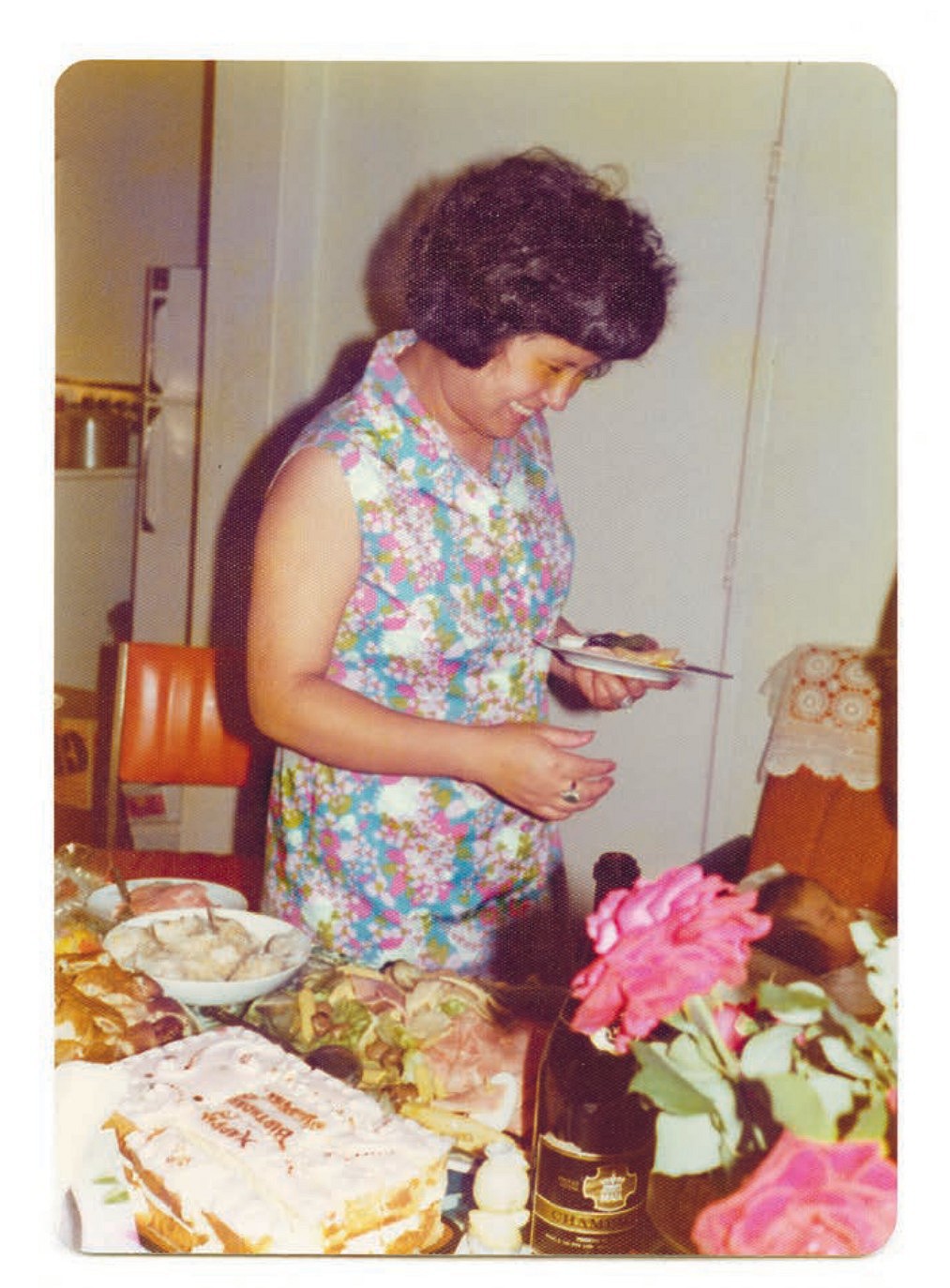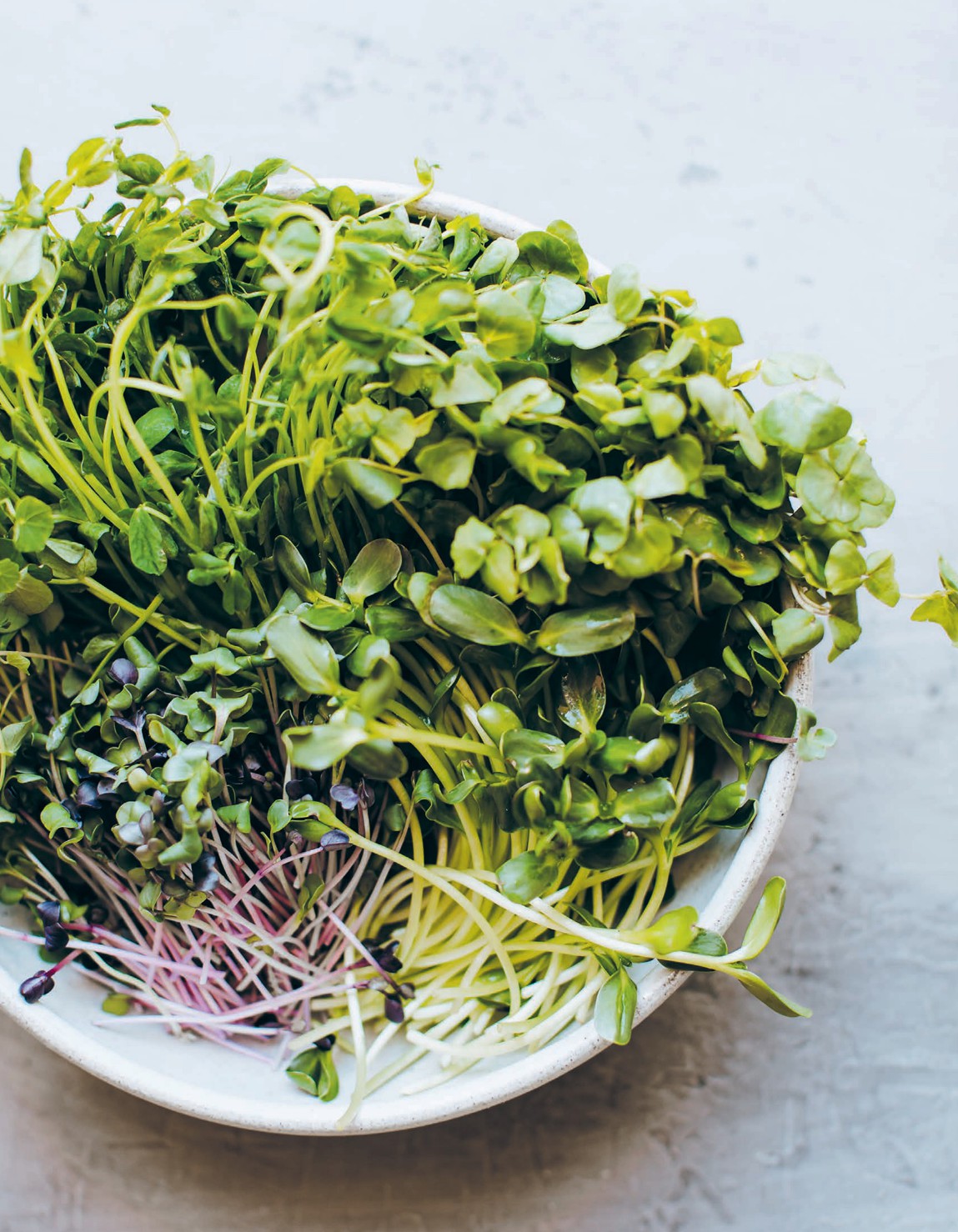F A MIL Y
NEW VEGET ABLE CLASSICS TO COM FORT AND NOUR ISH BY HETT Y MCKINNON Photography by Luisa Brimble
For my mum , for every thing.
CONTENTS Introduction


INTRODUCTION Famil y is our greatest inuence in shaping us, in making us. At the heart of every family , th ere is a complex story of fo od. The family table represents a constantly evolving edible history , wh ere nostalgia interlaces with tradition, identity and culture, and where small moments grow into lasting memori es. Along with the fo od that we eat around the table, there are also the shared experie nces the conversations, reections, heated discussions and info rmal exchanges that add a unique av our to our foo d. Famil y food isn t f ancy or complex. Its roots are humble, stemming from recipes passed on through generations, or fo od rituals born from daily cooking. At home, even the simplest dish can hold deep signicance. It could be a modest fried egg sandwi ch (which my mother made for me w henever I was cramming fo r a big exam), a bowl of ginger fried rice (which soothed a sore tummy) or a decorative watermelo n baske t (which my dad hand-carved f or every childhood birthday party) that reminds us of a time, a person, or a f eeling. The food we ate as children comfo rts us because it is evocative of a time when we were happy or nurtured; it connects us to our past, and provides a pathway to our future. Fam ily ties This book is rooted at home, and observes how our families inuence who we are and what we eat. Sharing fo od together around the table is the most basic act of kinship, but its eects ar e far- reaching and consequential. The table is a unier when we converse with one another around fo od, ideas are sparke d, creativity is kindled, characters are formed and li felong habits are engendered. Wherever I am in the world, it is the culinary foundati ons of my mother s dining table that inuence and inspire me the most. Fo od was an intensely serious aair in our house. I would wake to my mother standing over her wok and go to sleep with her organising the kitchen for the next day. Our dinners typically consisted of ve or six Cantonese dishes served alongside a medicinal broth not always our fa vourite and rice. My mo ther didn t drive, so she would take multiple buses or trains just to purchase the best brand of tofu or noodles. But even so, it is not her delicious f ood or he r audacious approach to fe eding that inspires me most. Rather, it is her intent. Fo r her, cookin g was her way of nurturing. In our home, as it is in many Asian families, fo od was a means of communication, enabling our parents to convey their fe elings towards their children. T rad itionally, it is rare fo r Asian parents to verbally express their love f or their children; rather, they show their aect ion through feedi ng them delicious and often copious amounts of fo od. While I am a mother who is very die rent culturally to the one I grew up with, it is my mum s love of fee ding that fuels me. It is the very lif e-for ce that pumps through my veins. Within my own busy family lif e, prioriti sing the ritual of mealtimes is paramount this is a time when we can engage with one another with intent and consideration, building a sense of belonging and strengthening our own family ties. FAMI LY

NEW F AMIL Y CLASSICS Dreaming up avourful yet nutritious meals, night after night , is one of the greatest challenges in cooking fo r your family. Its even harder to think of meals that incorporate plenty of vegetables. My mother would often say that thinking of a dish to coo k was much harder than actually making it; I wholeheartedly agree. Famil y meals should not be a chore, although I know they can often fe el this way. Over the years, I have learnt that cooking f or your fa mily is made easier by drawing on c lassics meals that we can pull together from memory with minimal e ort and ingredients. Fo r me, developing a r epertoire is the ke y these are the dishes that you can shop fo r without a list, that are adaptable, that you can cook consistently with ap lomb and serve time after time to an appreciative audience. The recipes in this book are my new family classi cs, the multicultural meals that I lik e t o serve around my table. Some are ol d favourites, and many are variations on much -loved comfort f ood, r epackaged with a healthier outlook. We all have our own way of choosing what to cook, but f or me, I l ike to start o with a type of dish . Do I feel like salad or am I craving a warming bak ed dish today? At least once a week, sometimes twice, nothing else but an Asian dish will do. Some days, I yearn for a huge bowl of veg-laden soup, or often I hunger f or eggs. And of course, pasta night, what would we do without pasta night? These are the types of dishes I serve up most frequently at my table and they are a good place to start building your own repertoire. FAMI LY
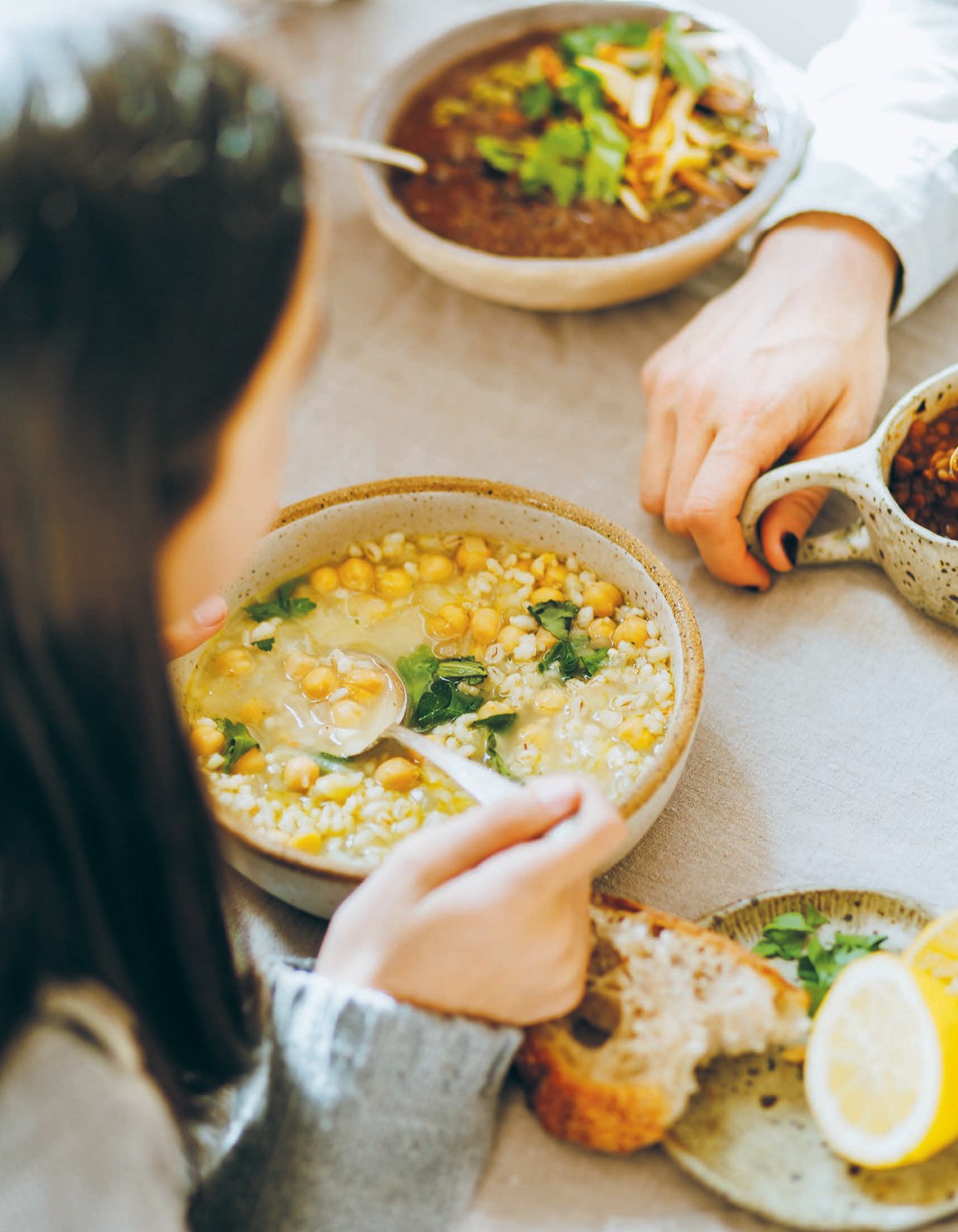
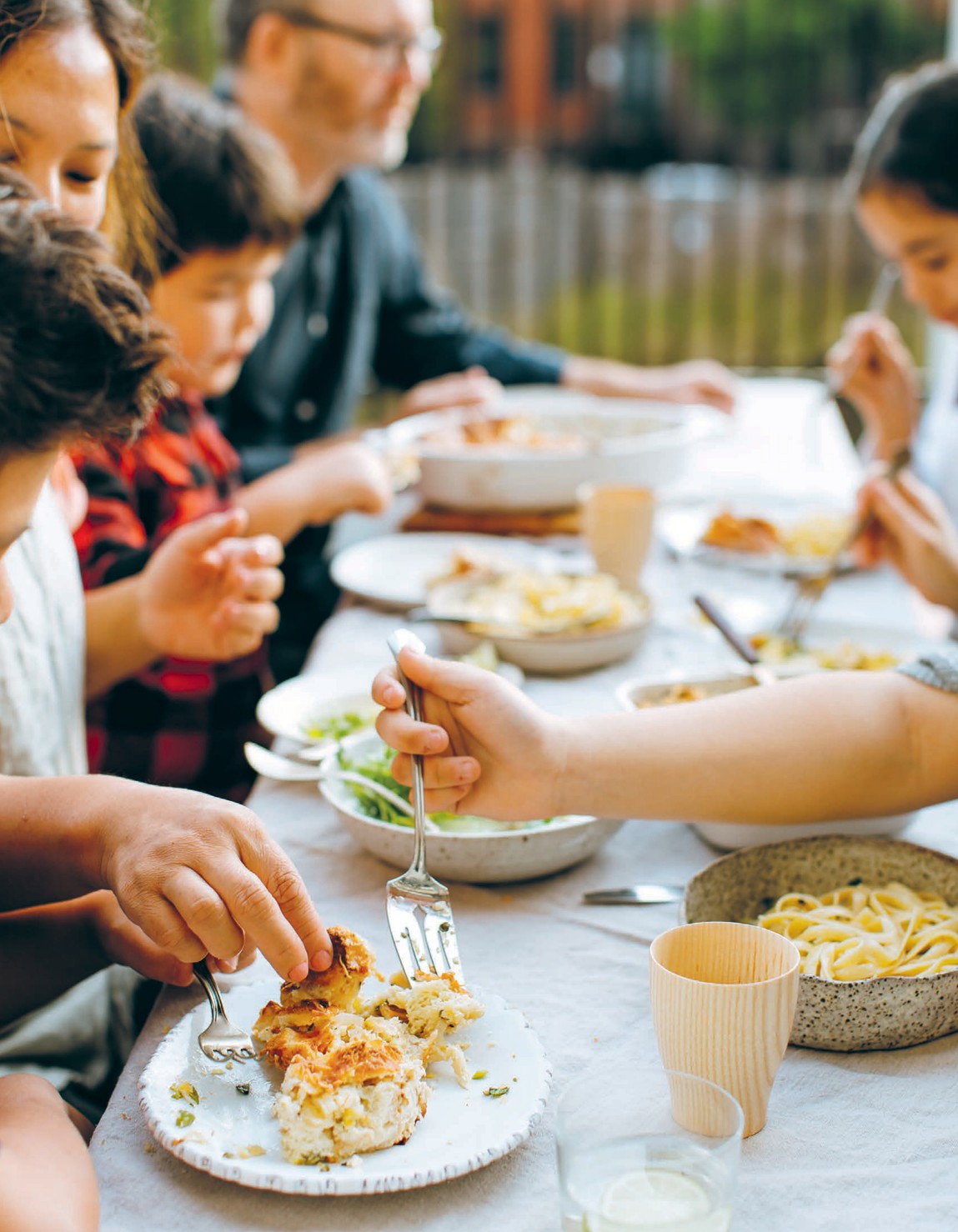

HOW TO EAT GREEN, TO GETHER At the heart of Family is creating fo od that the whole family can enjoy , to gether. If your family isn t fully vegeta rian, like mine, it can be a challenge to create vegetable-heav y dishes that are satisfying to all culinary sensibilities, especially those of younger children. Family , like my two previous books, vehemently moves aw ay from the idea that vegetables cannot be a full-size meal. In this book, I venture deeper int o family life , oering recipes and tips that will hopefully! tempt everyone around the table, young and ol d, to eat green. As a child, I don t remember m y mum ever telling us to ea t your vegetables . We ate our greens with the same enthusiasm as we ate our noodles, rice or meat. In Asian cooking, as in many other cultures, vegetables are a synthesised part of the dish, not a sideshow. Think lettuce braised with mushrooms, tomato stewed with eggs, and broccoli served with noodles there were no hunks of meat surrounded by three vegetab les at our table. Inspired by the way we ate as kids, the recipes in this book aim to presen t vegetables as a cohesive part of a delicious, comfo rting dish. Over the years, I have thought a lot about how to present vegetarian f ood to m y family in a way that is familiar and avourful. Y o u may notice that the recipes in this book f eature less herbs than my usual herbaceous style recent ly, I discovered that my kids (a nd many adults, too) do nt love herbs as much as I do (how horric, right?)! There are certain herbs that are usually well received basil, parsley , mi nt and thyme. Then there are the tolerated herbs chives, shallots and rosemary . And then there is the ultimate divisive herb coriander. U sing less herbs in my vegetarian dishes, or sometimes in cunning ways where they are hidden in a sauce or dressing, has revol utionised mealtimes in our house. My kids are now devouring plan t-packe d meals that they previously deplored. This herbal discovery, along with the little tips and tricks below , ha s made our family mealtimes greener and happier. P resent everyday vegetable s in a comfor ting way add some spinach, cauliower or sweet potato to family favourites lik e m acaroni cheese, mashed potatoes or lasagne. A dd complexity to your vegetables with gentle spices such as gr ound coriander and cumin. Introduce spices early on to acquaint young palates with di erent avou rs. T read carefully with herbs don t add too man y and try to nd the ones that your kids like (basil and mint tend to be kid faves) . Serve the herbs on the side and encourage them to add as much or as little as they lik e. M any people prefe r their vegetables raw because of the crunchy texture. V eg etables like fennel, aspa ragus, broccoli or nely shaved beetroot are often preferred raw by the young ones. Pair the vegetable with an ingredie nt that you know your kids will lik e. A big plate of vegetables can fe el threatening to some, so try adding croutons, sliced avocado, hard - boiled eggs or parmesan shavings. T ry dierent varieties of vegetables. My kids don t love the str ong avour of button or Swiss brown mushrooms , but they don t mind the more mel low avours of shiitake . I f you don t succeed with a dish the rst t ime, try again later. P alates change constantly and often need time to g et used to a texture or avour. FAMI LY








